Christo Is Best Known for Creating Art Work in Which He Wraps
With the globalization of art and artists, public art has broadened, no longer a painting on the wall or the statue in the public foursquare. Art installations and sculptures include experimental ideas, oversized installations roofing a room of the museum or areas of large public spaces, bringing the public into the artwork with multi-dimensional views. The artist, building architects, or the local artisans who brand the parts of fine art installation now collaborate to create a successful consequence.
| Name | Native Country |
| Ai Weiwei | China |
| Yayoi Kusama | Japan |
| Kara Walker | United States |
| Dale Chihuly | The states |
| Nam June Paik | Korea |
| Andy Goldsworthy | England |
| El Anatsui | Republic of ghana |
| Mona Hatoum | Palestine |
| Judy Chicago | U.s. |
| Christo | Bulgaria |
| Jeanne-Claude | Morocco |
| Ruth Asawa | Usa |
| Esther Mahlangu | South Africa |
Ai Weiwei (born 1957) is a contemporary Chinese artist and the artistic consultant on the Beijing National Stadium for the 2008 Olympics. Weiwei studied blitheness at the Beijing Moving picture Academy and is a founder of the Avant-Garde art group called the 'Stars'. Exploring the issues of freedom of speech and human rights, he exhibited with the Stars in Beijing. Weiwei attended the Parson School of Blueprint in New York and spent eight years taking photographs. He returned to Prc when his father became ill and started working on political fine art. In 2010, he was put under house arrest by the police when the government objected to his political ideas.
In 2014, Weiwei created an art installation to explore the issues of freedom of speech and human rights at Alcatraz Island, a notorious island prison house in the San Francisco Bay. Weiwei could not exit China to attend the opening just sent all the work for the installation, relying on others to properly install his work, using 12 one thousand thousand Lego pieces (15.1) to create the 176 tile pictures of political prisoners, creating a dialogue for how people define individual rights, liberty and justice, and personal responsibleness. He added porcelain flowers and Chinese kites, (xv.2) incorporating them throughout the prison. In i of the large rooms, an oversized, colorful dragon kite hung from the ceiling and in another room binders well-nigh the dissidents provided information along with postcards viewers could send.
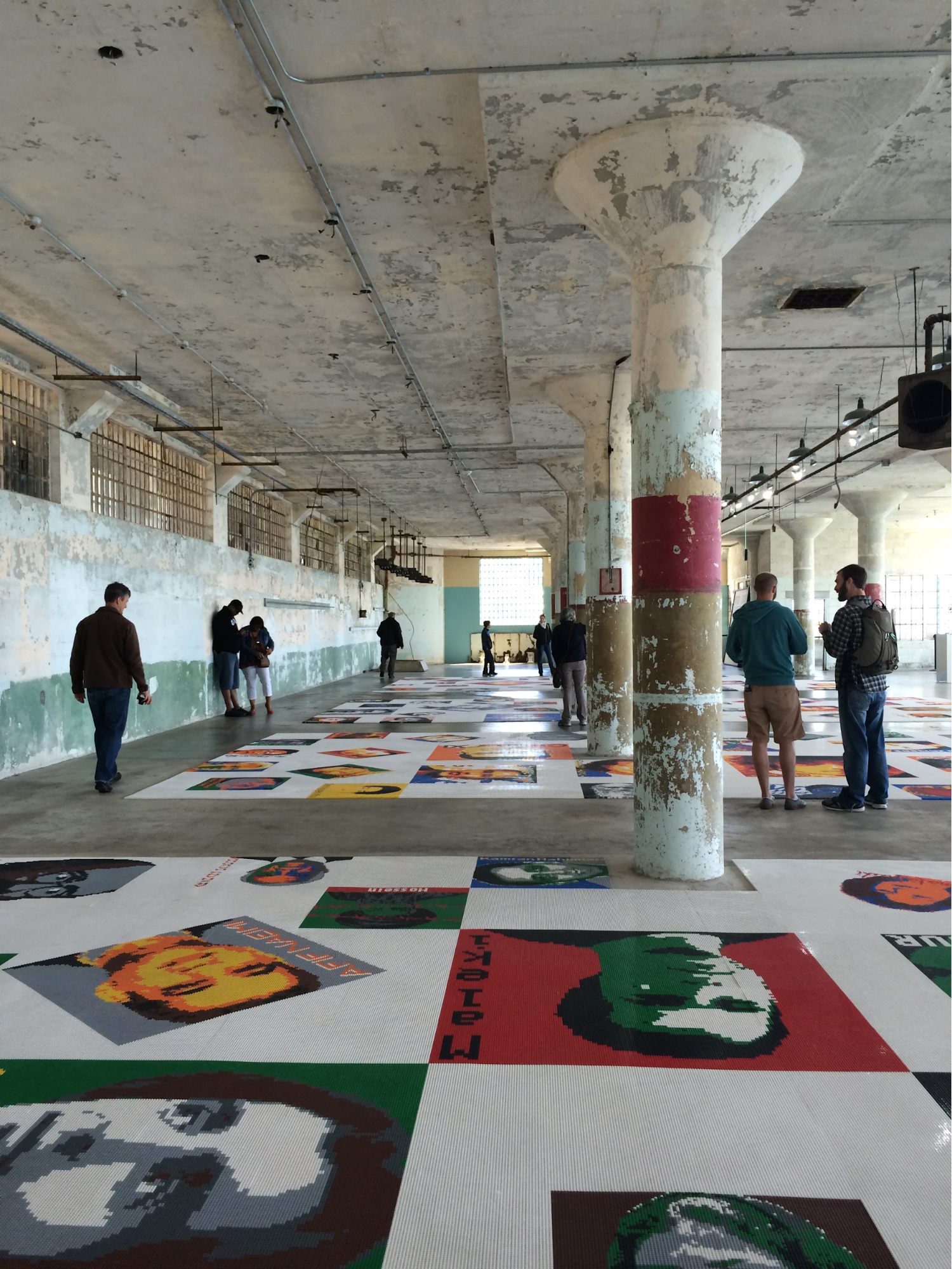

The art of Marchel Duchamp, who used commonsensical objects to create his artwork, influenced Weiwei early in his life. Forever Bicycles (xv.3) is an installation Weiwei fabricated from almost 1,300 bicycles. His concept was based on the bicycles mass-produced in his hometown, nevertheless too expensive for those without economical resources. The structure of steel bicycles formed a tunnel for viewers to run into the unending puzzle of interwoven parts against the sky. Trees (15.4) were sculptures Weiwei fabricated from camphor and cedar tree branches and trunks he collected from the mountains in China. He assembled the parts to resemble real trees, a source for contemplation, and appreciation of nature.
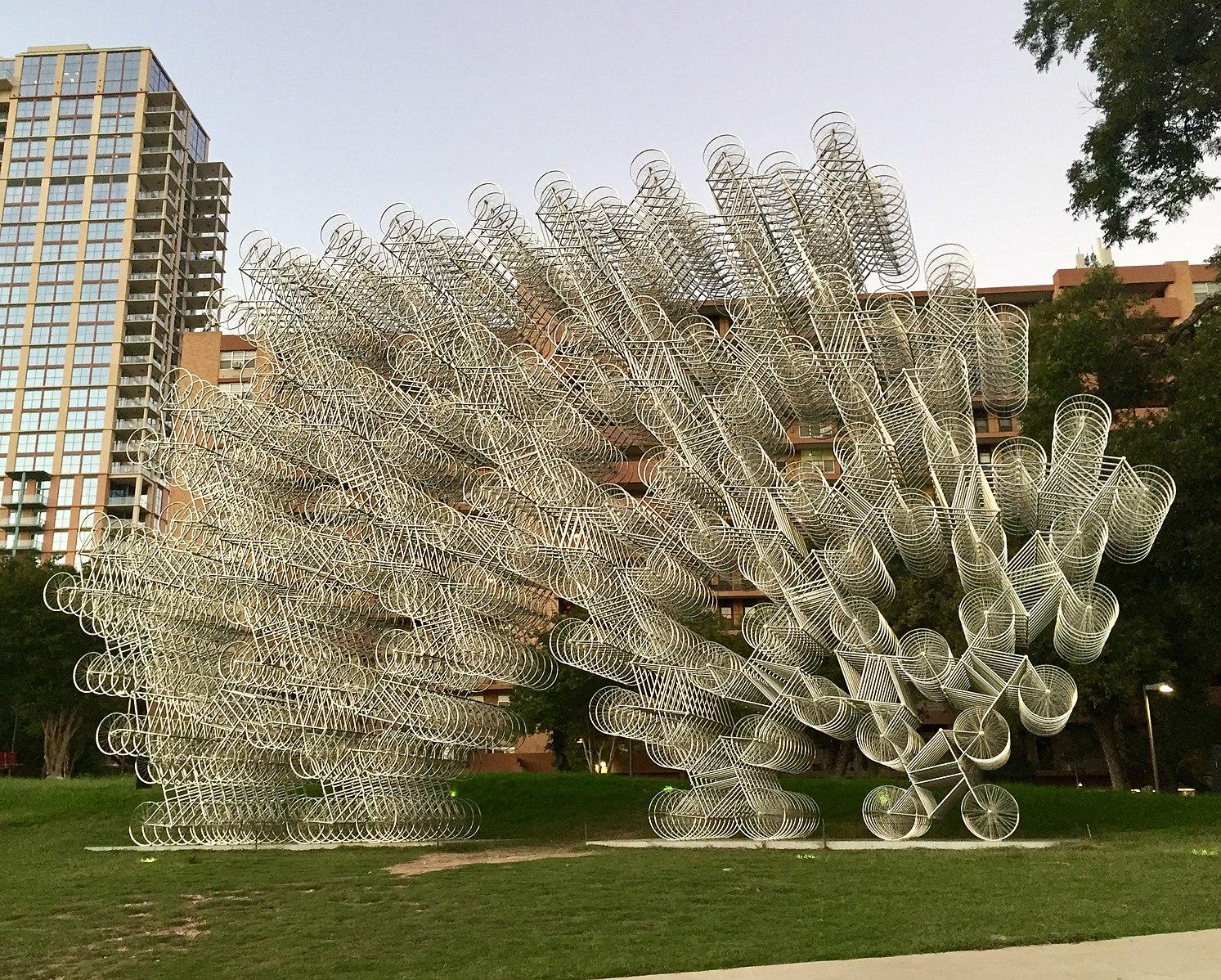
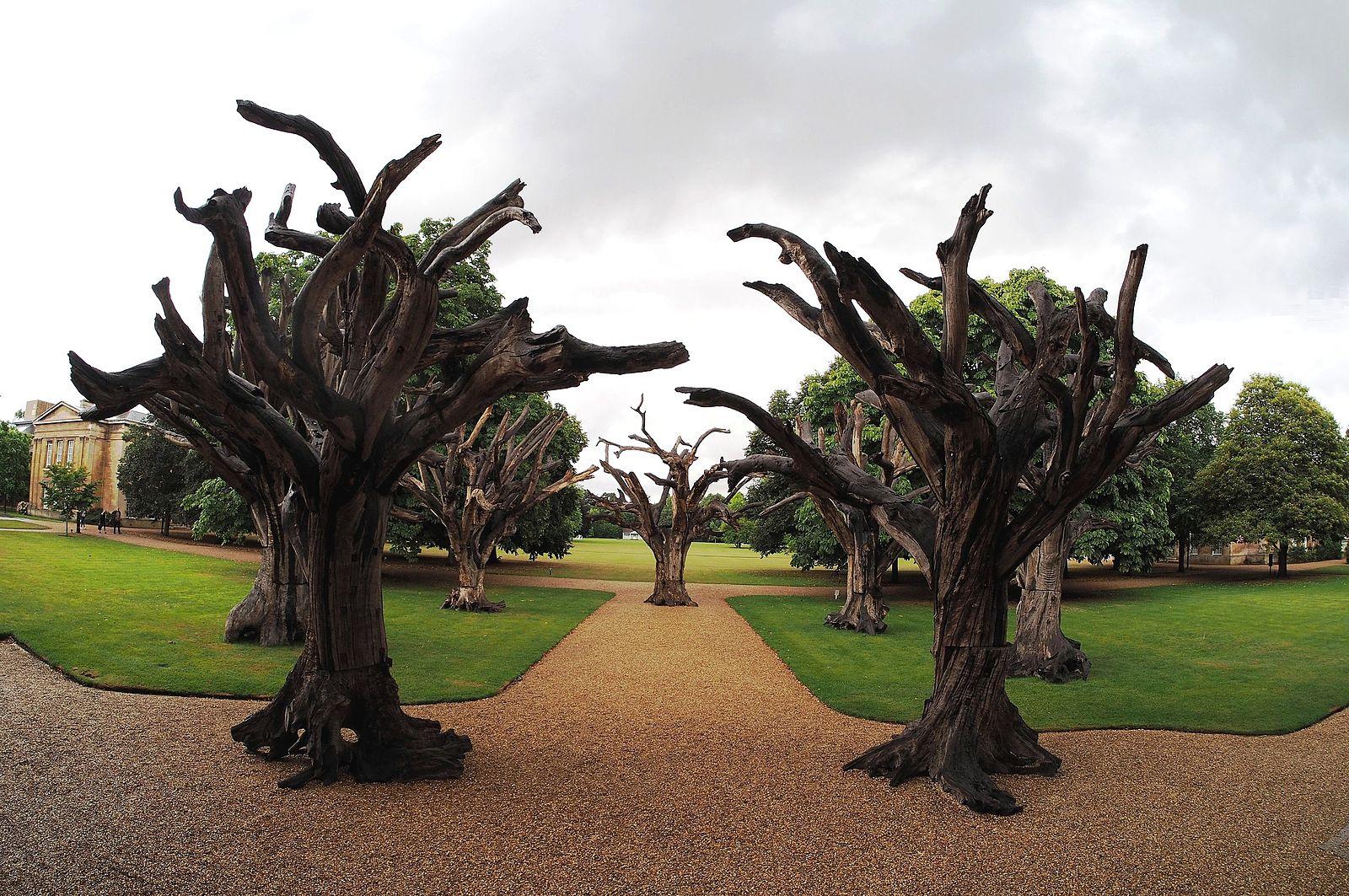
Yayoi Kusama (born 1929) is a Japanese artist and author who has worked with a multifariousness of media. Her work is bold, psychedelic, repetitious, and full of pattern. Known around the earth as the Princess of Polka Dots, Kusama reflects the polka dot motifs in her art. She is one of the best pop fine art artists and came to New York to study and work when she was immature, returning to Japan and creating her exceptional and unusual fine art installations. She is considered i of Japan's greatest living artists.
Ascension of Polka Dots on the Trees (fifteen.5) and Pinkish Balls (15.six) are carmine/pinkish and white/black polka dots surrounding the copse, or an entire room filled with polka dots. Obsessive about her art and its vibrancy, colour, and style are trademarks of Kusama. The art is a combination of minimalism, abstruse, surrealism, conceptual, and just plain Kusama. Using constitute objects in the environment every bit her canvas, she fills the object with shining polka dots. Pumpkins have been part of her themes for a long time, whether creating rooms of pumpkins or single behemothic pumpkins, always covered with her motif of dots. The lone, massive Xanthous Pumpkin (xv.7) sculpture sits by the sea, decorated with lines of large and modest dots.
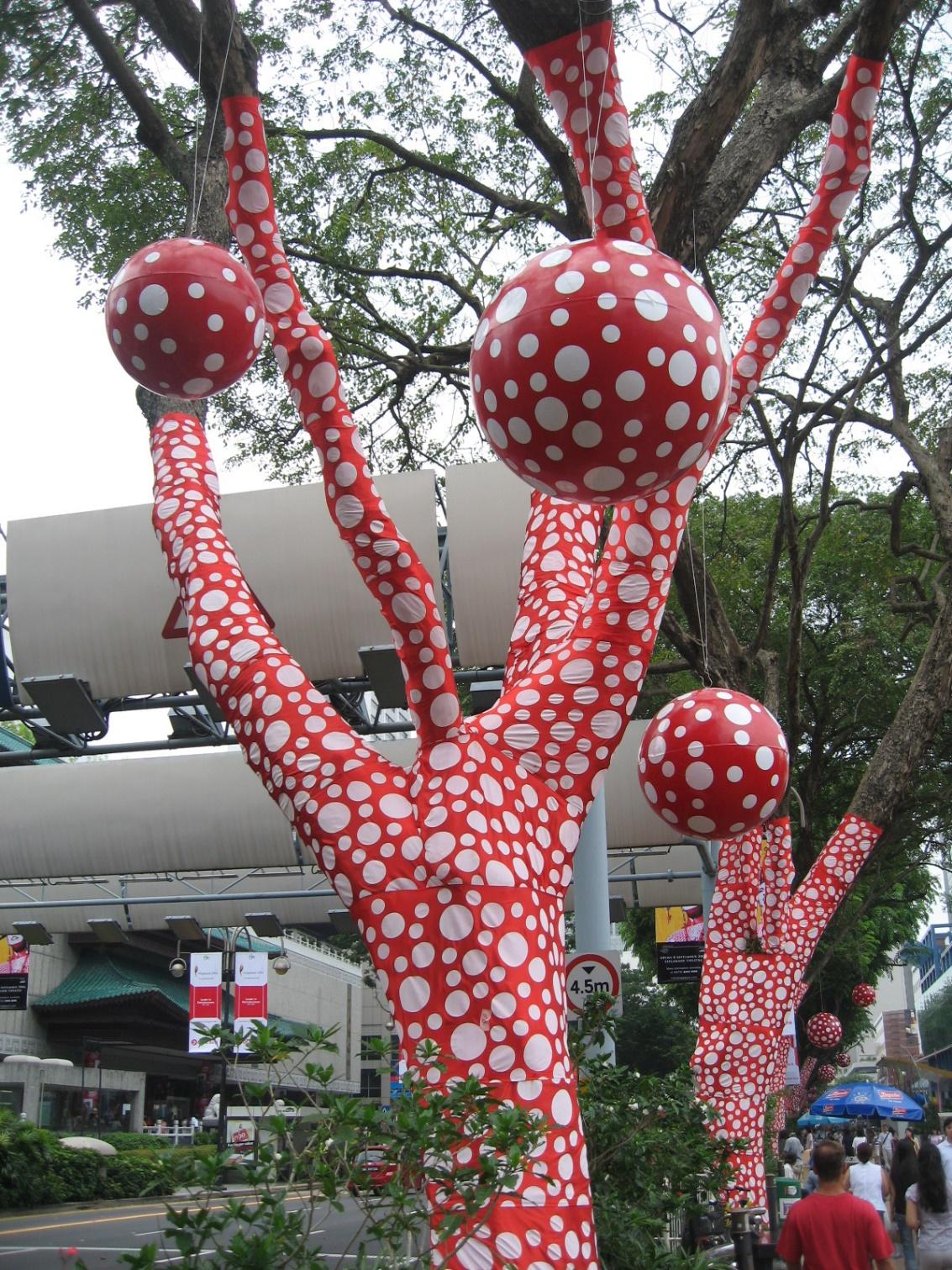
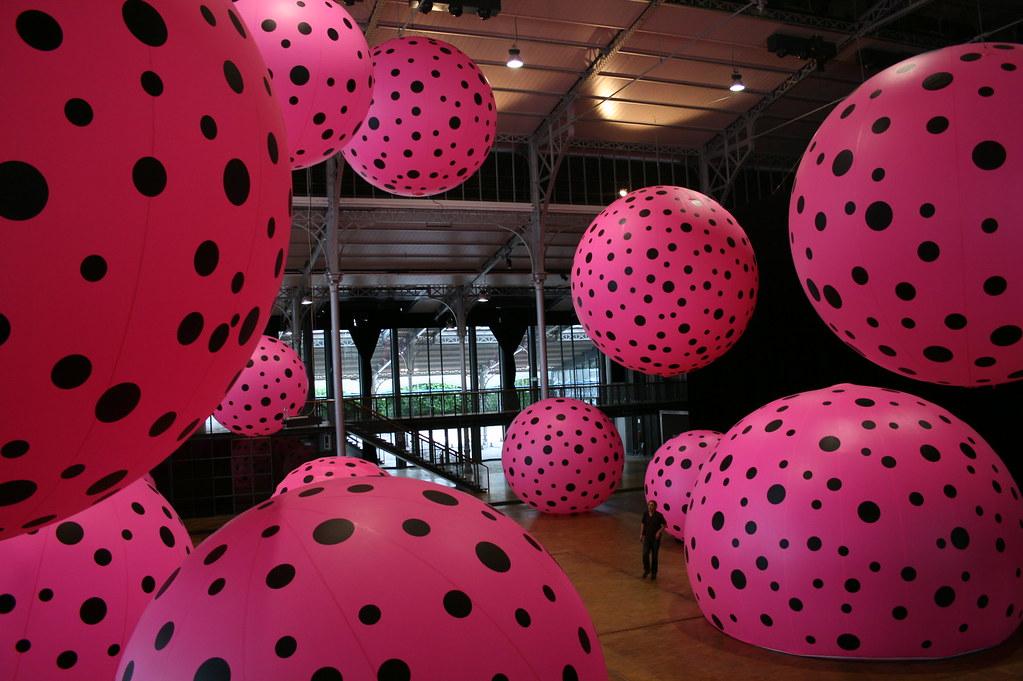
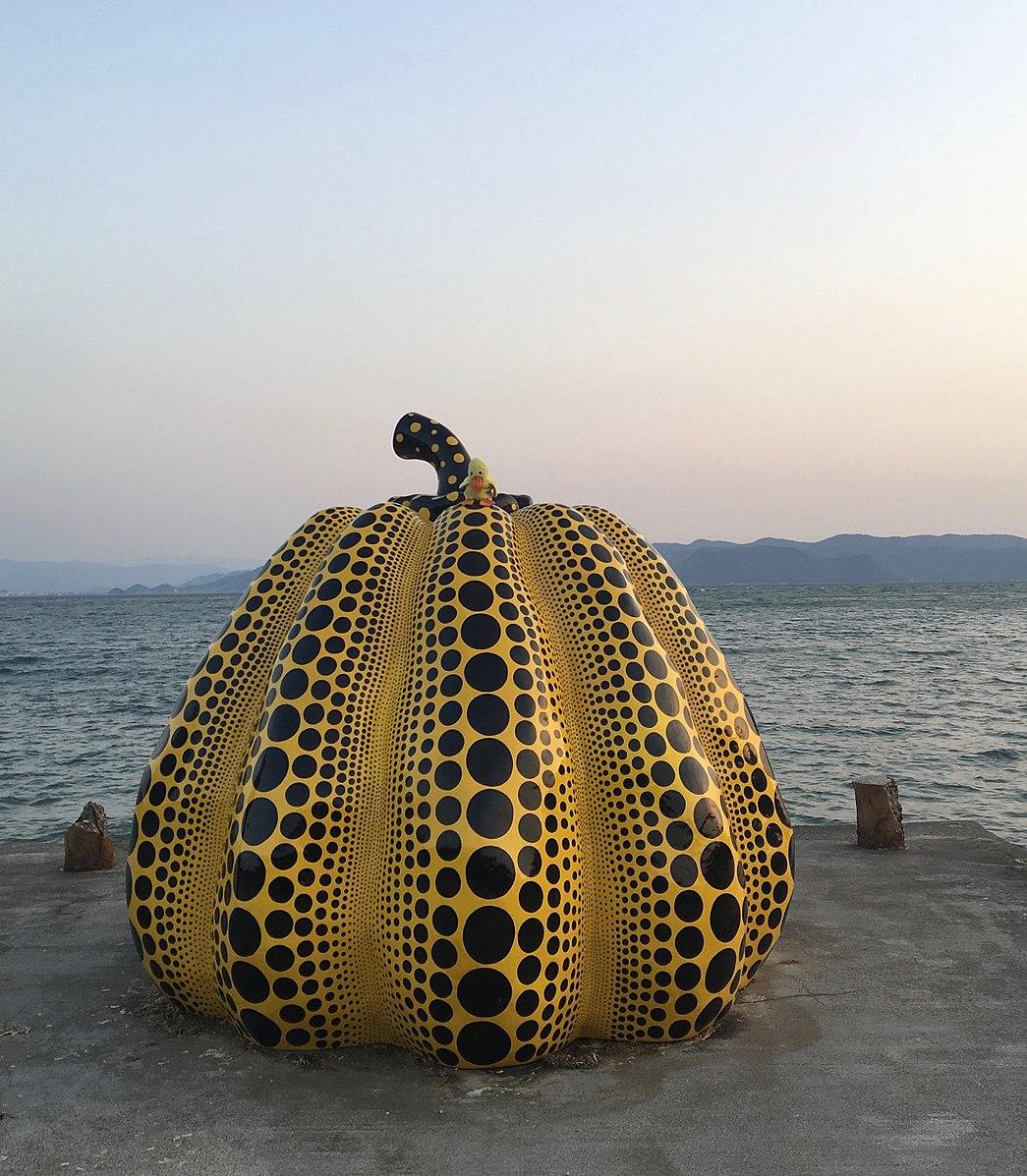
Kara Walker (built-in 1969) is an American artist with an M.F.A. from Rhode Island School of Design who explores the conflicts of race, sex, and gender with significant silhouetted figures that can be humorous while also demonstrating violence and suppression. She builds a panorama of cut out newspaper silhouettes installed confronting a white wall bringing the violence to life. Overhead projectors illuminate the figures and cause the viewers' body to cast shadows onto the scene, calculation depth and a ghostlike feeling. Blacklisted: The Unsettling Fine art of Kara Walker (15.eight) was on of her shows exhibiting slavery in historical truths of violence, sexual set on, and subjugation equally she portrays the myths of slavery from the Antebellum south.
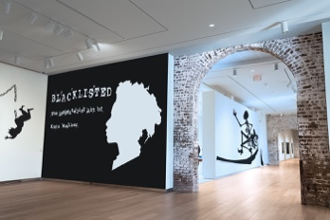
15.8 Blacklisted: The Unsettling Fine art of Kara Walker
Dale Chihuly (built-in 1941) is an American drinking glass sculptor who inverse the way drinking glass is diddled, how it is shaped, and the unique effects of how the drinking glass transforms. Chihuly started as an interior design major at the University of Washington but was introduced to glass making and switched to the Rhode Island School of Blueprint. Constrained past the rules of the property of melted materials, Chihuly had to overcome the technical difficulties of glass bravado to create his large-scale colorful sculptures. He founded the Pilchuck Glass School in Washington, where he good experimenting with glass.
Chihuly creates big installations made to interact with the environs (fifteen.9), for instance, in the botanical garden, large spheres, and spikes of glass intermix with the flowers in complementary and contrasting colors. The boat of glass balls (15.ten) floating on the lake reflect the colors, while other vibrant drinking glass balls are floating around the gunkhole as though they fell into the water. The Sun (15.eleven) is one of his original concepts in glassblowing, creating long, twisted pieces of drinking glass and installing them on metal spikes building a large sculpture to hang or rise from the ground. The Chihuly Garden and Glass Museum is a vast permanent exhibition showcasing his piece of work.

Nam June Paik (1932-2006) was a Korean-American artist who worked with multiple types of media but was considered the founder of video art. Fleeing their native home during the Korean War, his family moved to Germany, then Paik moved to New York to combine video and music with performance art. In ane of his installations, he scattered televisions everywhere and used magnets that would distort or change the images and audio. In another installation, Paik laid several aquariums containing water and fish in a line pond in front of monitors showing images of other fish. He is well known for taking television sets and making them into robots, Pre-Bong-Man (15.12), adding wire, metallic, and parts from radios.
Paik created a large installation entitled, Electronic Thruway: Continental U.S., Alaska, and Hawaii (xv.13) currently installed in the Smithsonian. It is a argument most America's obsession with idiot box, moving images and bright shiny objects. Paik is too credited with the term 'electronic state highway,' a precursor to the coined term 'information superhighway.' For the installation Video Sculpture (fifteen.14), Paik stacked video monitors and used neon lights around the screens, flashing and reflecting on the screens.
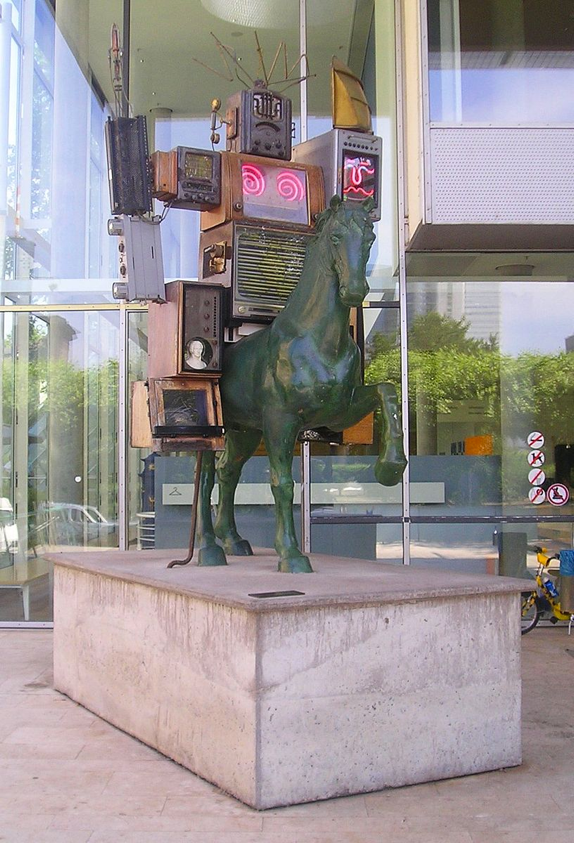
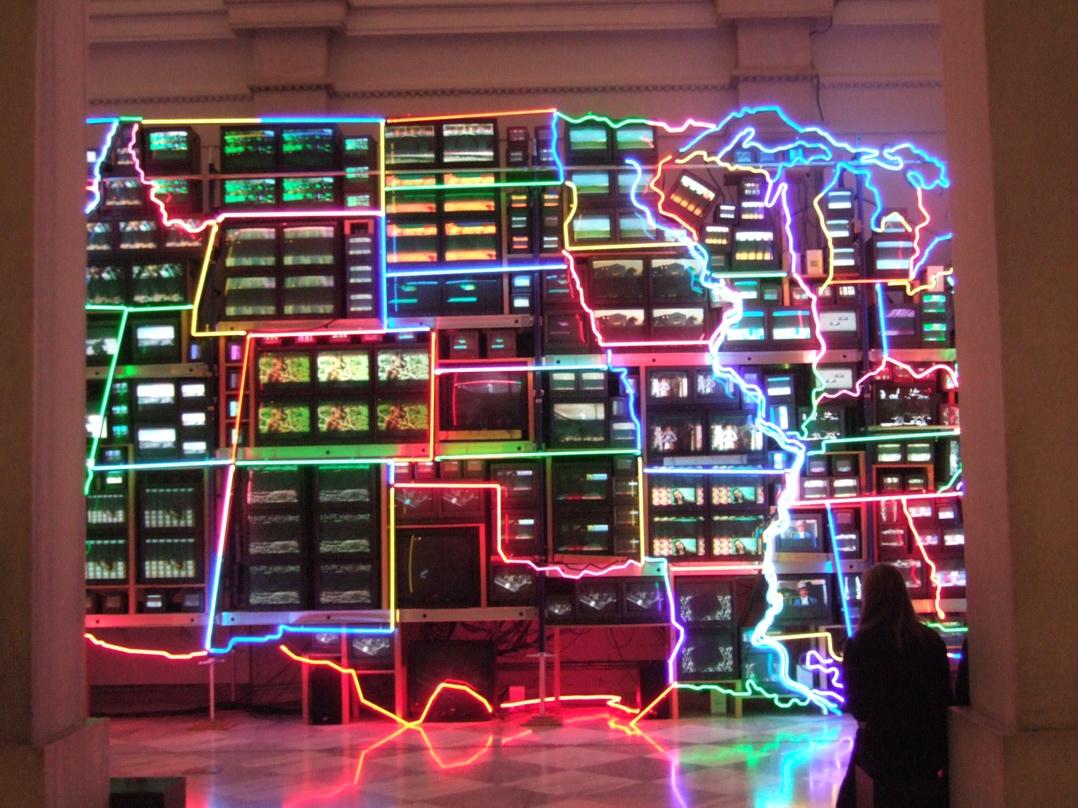
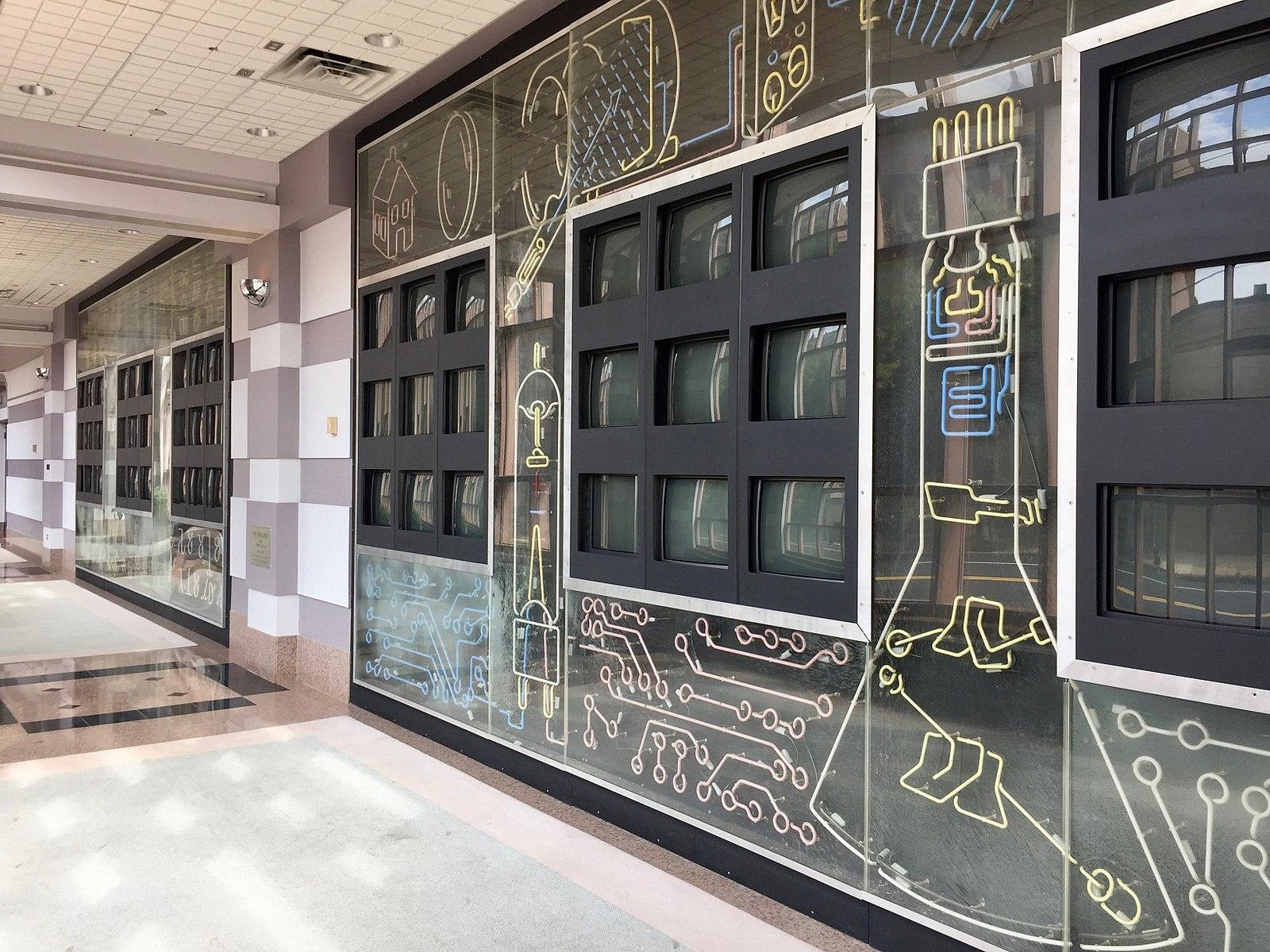
Andy Goldsworthy (born 1956) is a British sculptor and environmentalist who creates land art in natural and urban settings. Goldsworthy studied fine art at Bradford College of Art and Preston Polytechnic. He uses found natural materials that are visible for a brusque period to construct a sculpture either outside or in a gallery (15.xvi). Using photography to document his work at dissimilar stages of life, he immortalizes his piece of work in flick. Goldsworthy uses materials similar flowers, leaves, snow, twigs, icicles, rocks, and other found objects. Many believe him to exist the founder of rock balancing seen in Cairn (xv.17) a unique shape of rocks without mortar. He likes to utilize his bare easily and found tools to create with, instead of human-fabricated tools. Some of his works are permanent sculptures standing the test of time and nature, including the Rock River (15.18) stacked along the dry out creek bed; notwithstanding, most installations succumb to decay.
"I savour the freedom of but using my hands" – Goldsworthy
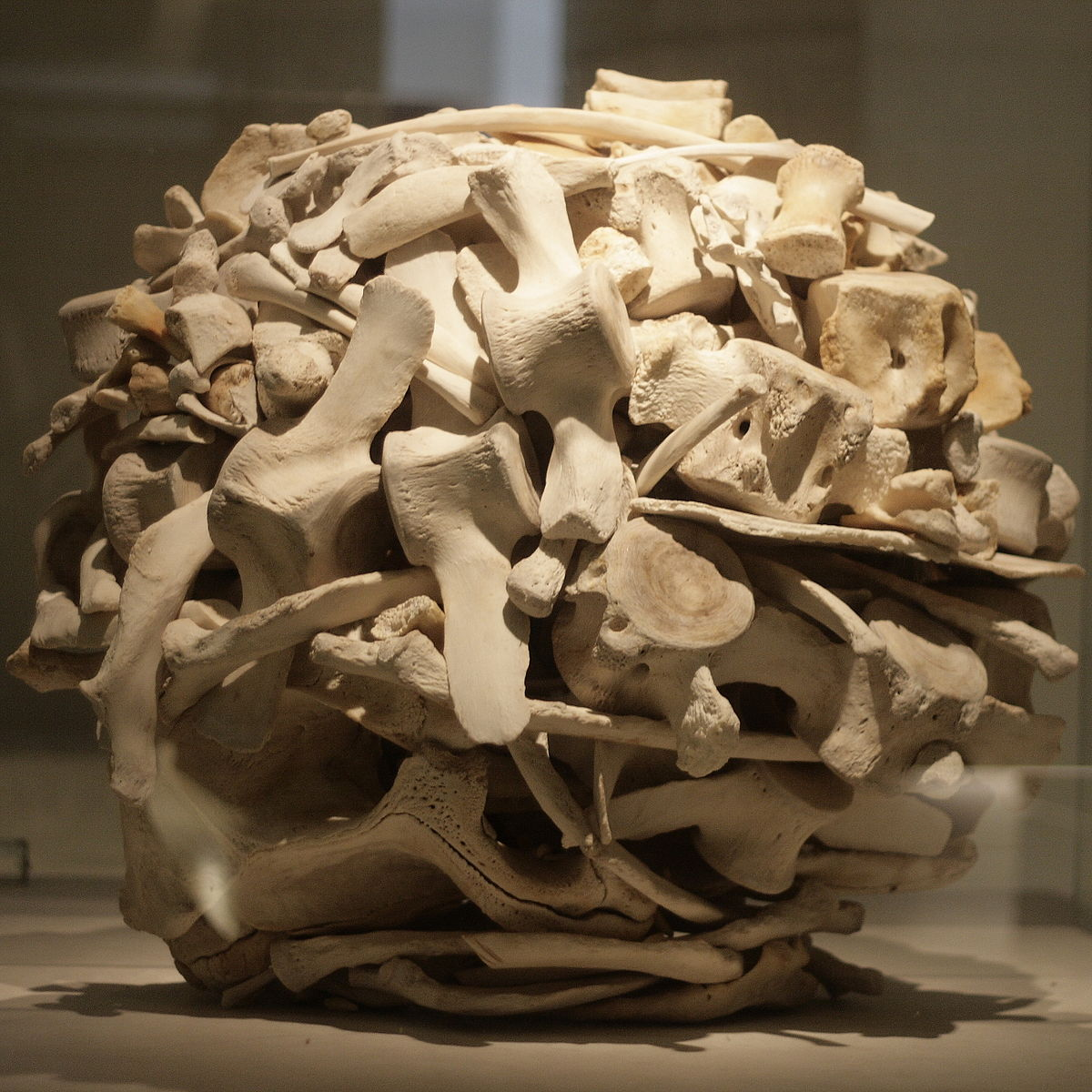
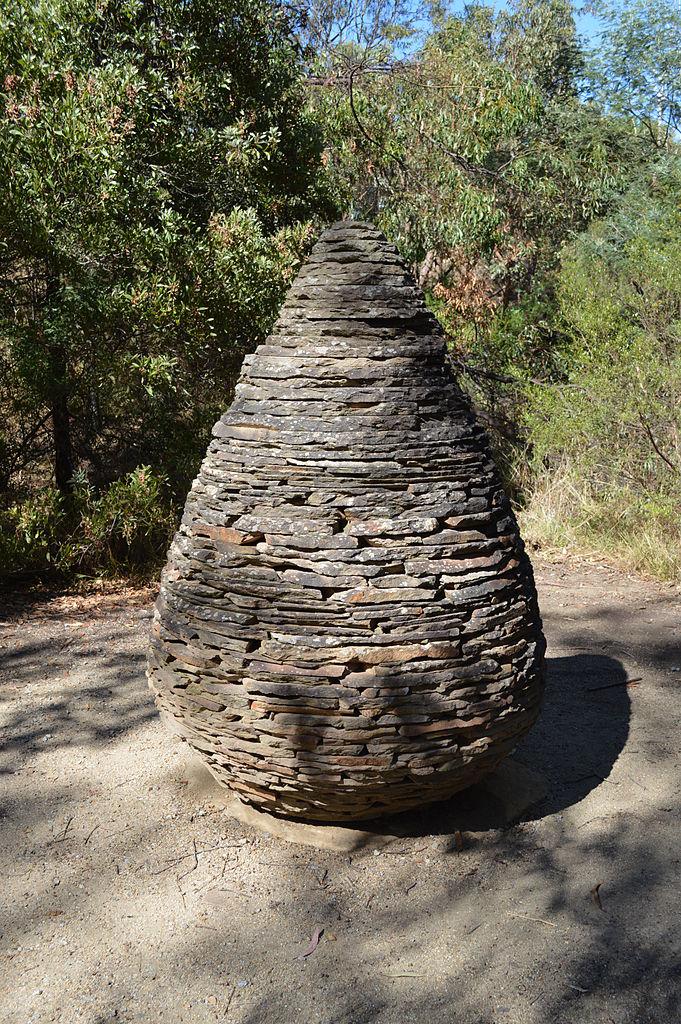
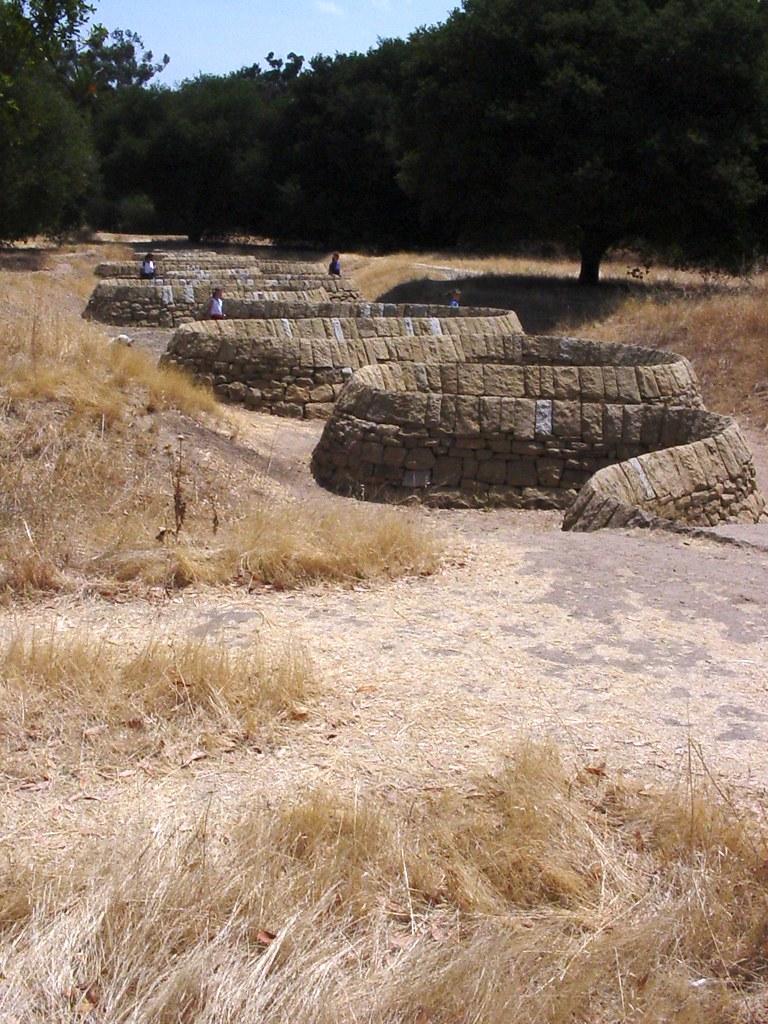
El Anatsui (born 1944) is a Ghanaian sculptor who taught at the University of Nigeria and affiliated with the Nsukka group from the 1970s to revive the tradition of uli. Uli is a design drawn past the Igbo people of Nigeria and was becoming a lost art. Information technology is a robust linear design without many perspectives and is asymmetrical. Initially, El Anatsui used clay and wood to make objects based on Ghanaian beliefs and subjects, cutting wood with chainsaws, he let the marks bear witness from the chainsaw and then used an acetylene torch to blacken the piece.
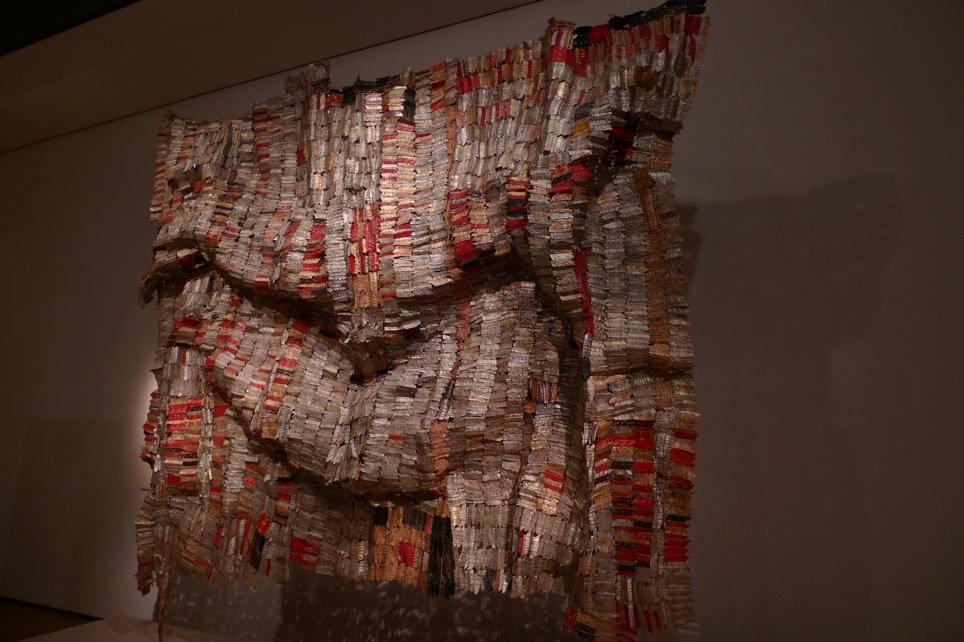
El Anatsui became interested in doing something with a large corporeality of recycled fabric bachelor. Homo's Material (15.19)is a big sculpture resembling cloth and the installation material layers like Kente cloth (15.xx). He used discarded items from bottle caps or folded and crumpled pieces of metal found at recycling stations, which he tied together with copper wire, giving the cloth the power to fold and drape. His works tin be pregnant and cover a wall and the luminosity of the metal and the gallery lights reflecting through the room, give the piece its own life. Pinnacle (fifteen.21) was fabricated of plant bottle tops and tins used for milk, droppings littering the countryside, and filling the trash bins that El Anatsui recovered and used to form the sculpture. He wired them together loosely (15.22), so the pieces could create their shapes and folds.
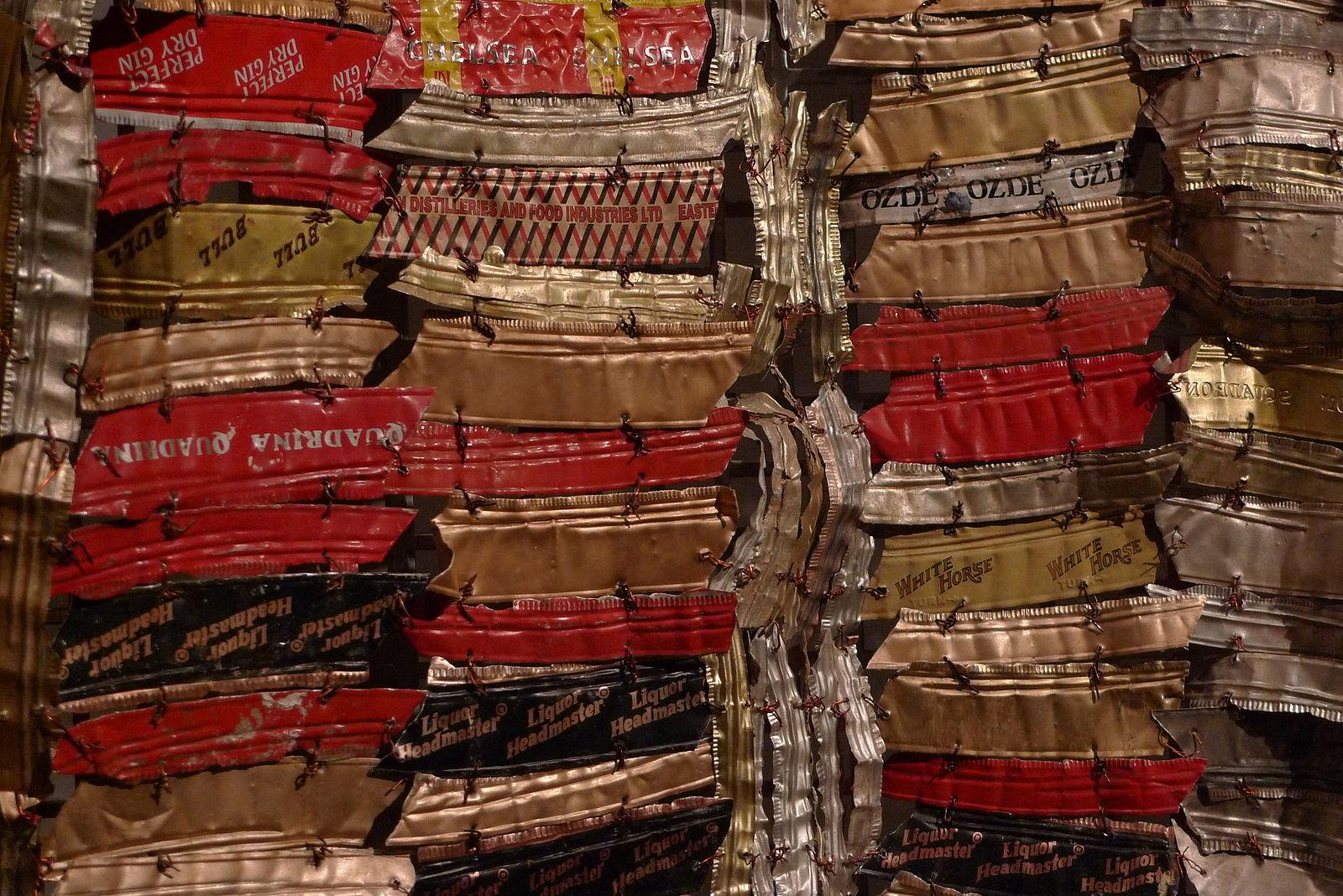
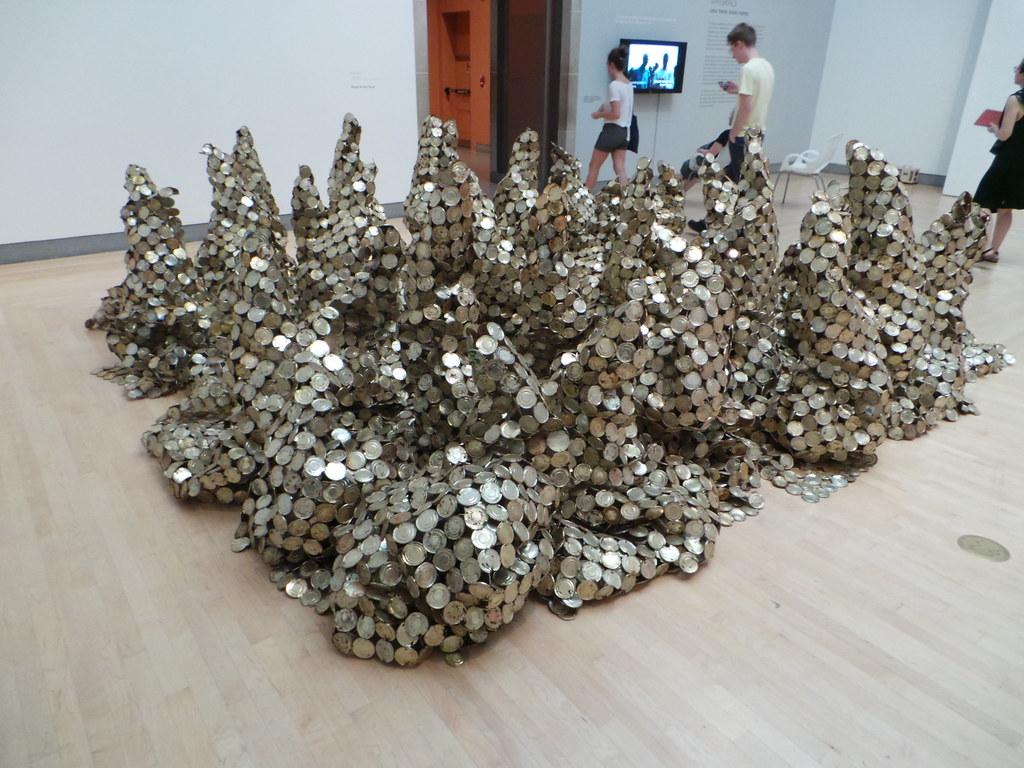
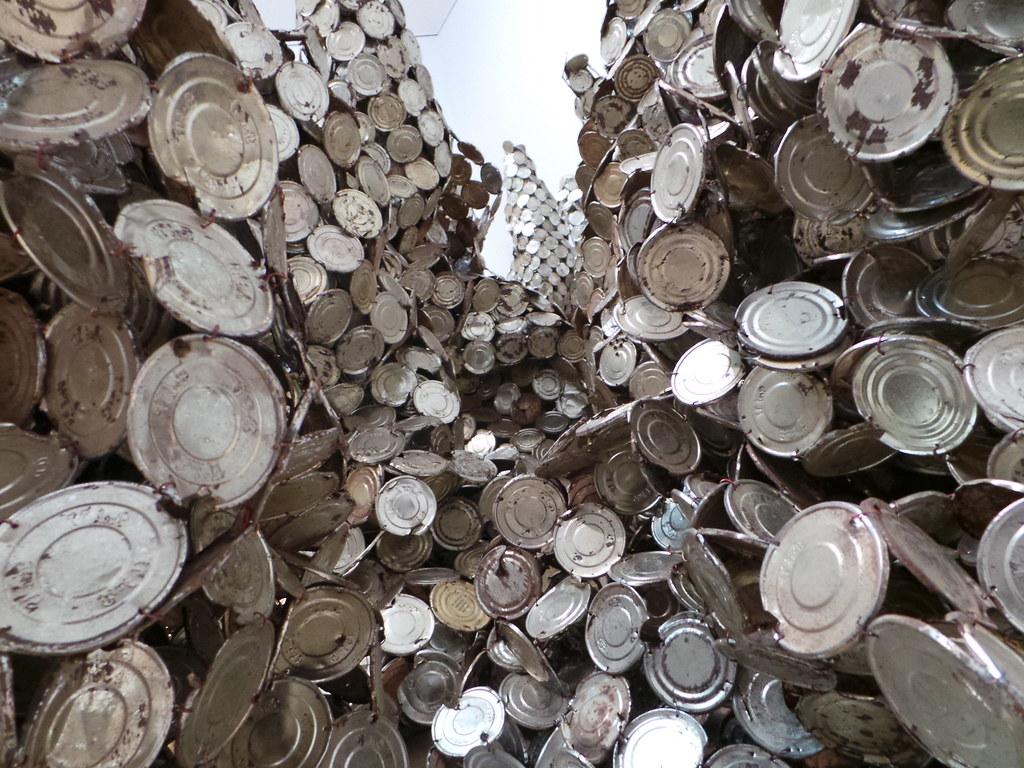
Mona Hatoum (born 1952) is a Palestinian who wanted to be an artist throughout her early on years, even in the face up of parental disapproval. She finally studied in Lebanon and London, now creating art to explore the dangers and bug of the world. Hot Spot (15.23) is a big globe depicting political unrest on the planet. The steel earth is illuminated with ruby-red lighting to magnify the problems any viewer perceives about global warming, humanitarian issues, wars, or people fleeing their homelands.
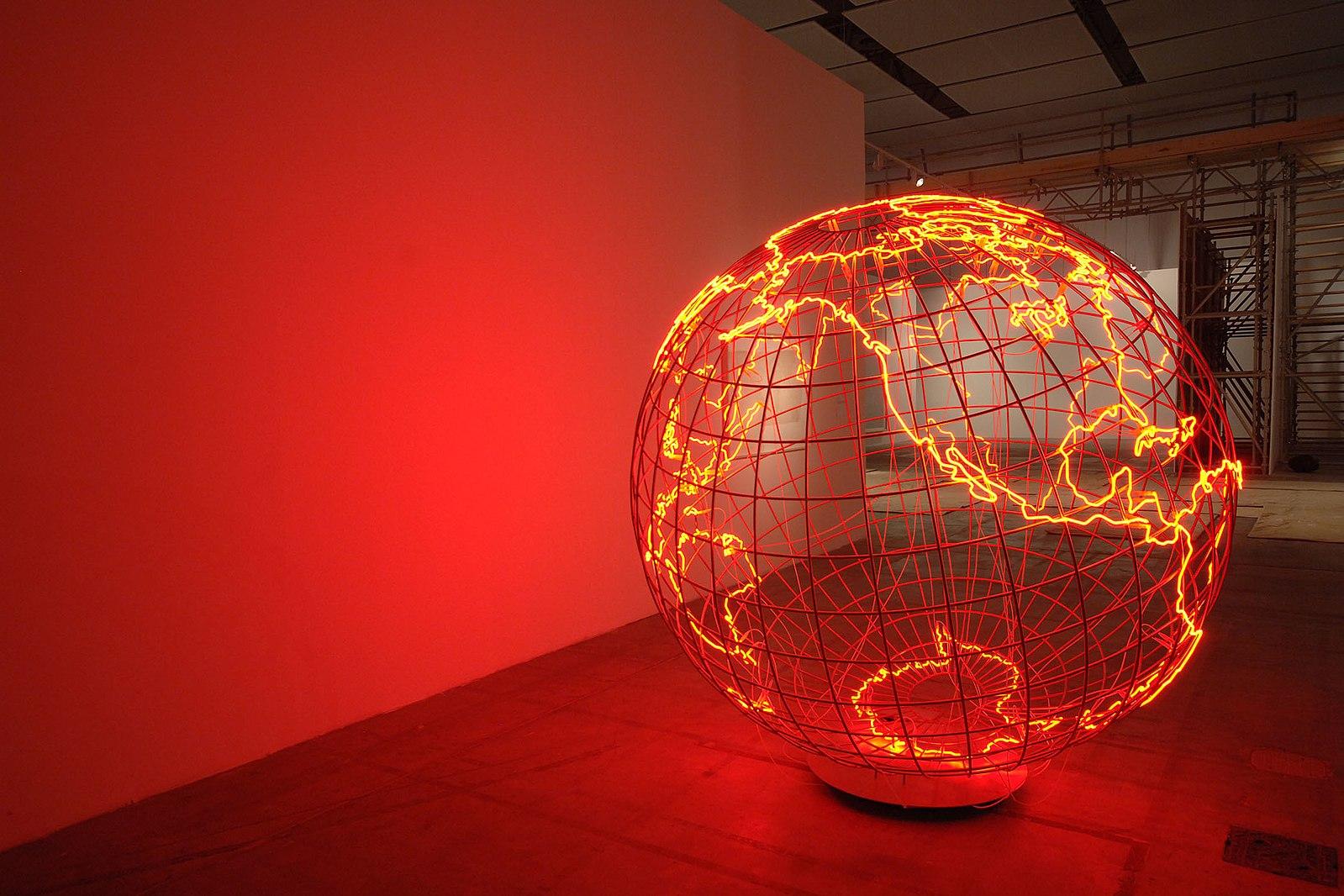
Judy Chicago (born 1939) studied fine art at the university, and her original work followed the ideas of Minimalism earlier she incorporated feminist concepts into her work, and she helped start a collaborative movement to encourage and assist female person artists. The Dinner Party (15.24) is one of the best known of her installations, a triangular table set for xxx-nine women from history. Chicago used motifs commemorating the lives of each adult female, embellishing each table setting with events in the woman's life. Names of 999 other women are written with gold on the floor beneath the table.
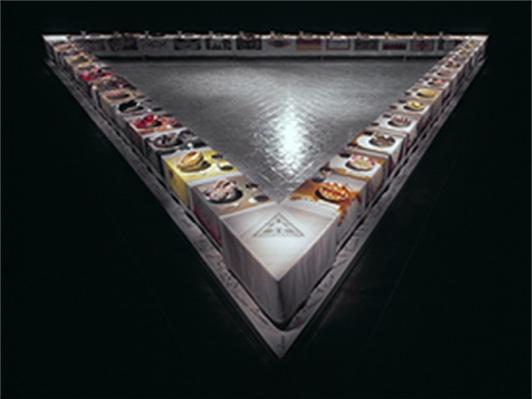
Christo (born 1935) and Jeanne-Claude (1935-2009) are a hubby and wife team who created large-scale installations; he was born in Bulgaria, and she was from Kingdom of morocco. They worked together for over thirty-five years using materials to wrap or drape across large parts of the landscape or buildings around the earth, based on themes of political or economical changes. They did not participate in the usual gallery or art markets; instead, they worked outside the system, drawing criticism. The Gates (15.25) was erected in New York City along the paths of Central Park. Although the planning and construction of the gates took a twelvemonth, they installed seven,503 brightly colored saffron-colored gates in five days, achieved without whatever city money or sponsorship. Christo and Jeanne-Claude raised money to pay for the project from posters and T-shirts.
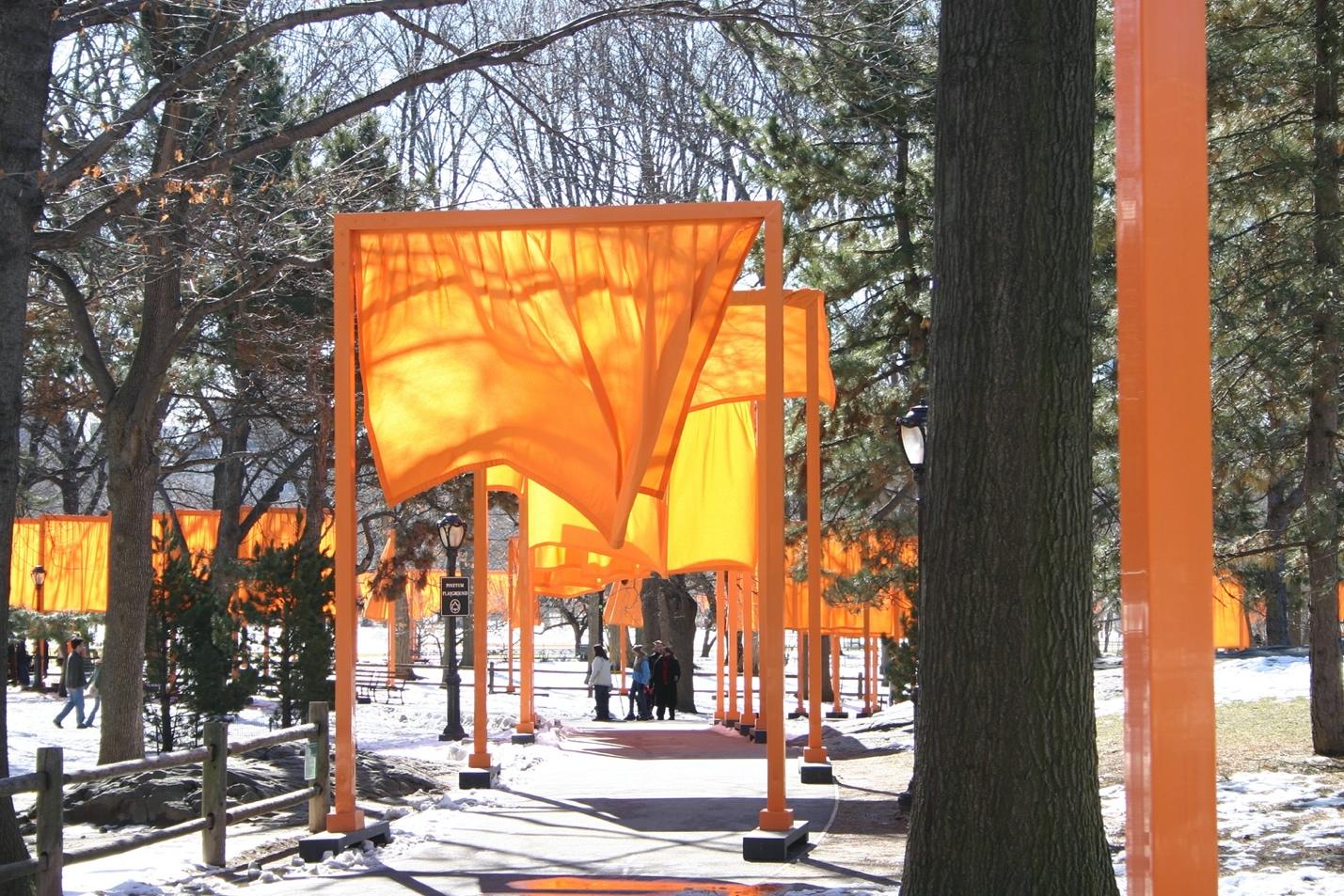
Another project they designed and installed was The Umbrellas, the blue umbrellas (15.26) were mounted in Nihon and the xanthous ones (15.27) in California, all planned to be ready at the same fourth dimension. Steel bases were planted into the ground to hold the poles and anchors before approximately two,000 workers could insert the umbrellas. In Japan, over 1,300 blue umbrellas were fit tightly together in the smaller infinite; notwithstanding, in California, the more than ane,700 yellow umbrellas were spread over the much larger space. The umbrella installations only remained in place for a few months; however, information technology was a major allure for tourists, weddings, or family gatherings.
Ruth Asawa (1926-2013) was born in California, her parents' Japanese immigrants, and during World State of war 2, she and her family unit were detained in the internment camps. After the war, she started her education as a teacher before switching to art. At one point, she learned to weave baskets and started to use galvanized wire for weaving, which inspired her to become interested in lines and how a line can become in multiple directions. She worked with wire to brand her three-dimensional woven structures (xv.28, 15.29) meant to hang and generate shadows that shift in the low-cal and change the space. Asawa was passionate about art education and helped constitute programs for children equally well a training and employment programs for artists.
Esther Mahlangu (born 1935) was born in Due south Africa as part of the Ndebele people and began painting as a child. Her mother and grandmother were landscape painters, an ordinary skill for the females in the region. Mahlangu paints on extensive scale backgrounds using patterns she saw in the clothing of the people, generally very brightly colored with geometric shapes. The carmaker BMW had artists such as Warhol and Hockney design a car each twelvemonth to use as their Art Automobile. Mahlangu was the first female person asked to pattern a motorcar, and her BMW Art Motorcar (fifteen.30) was painted with her traditional geometric designs and colors. Many of her designs are constitute on corporate brands, the bold patterns outlined with black lines and bright colors. It is common for the people to paint their houses with colors, and she painted her house (xv.31) post-obit these concepts. Mahlangu has worked tirelessly to bring fine art instruction to children, directing a schoolhouse she founded while standing to support artists in her homeland. For her continuing dedication, she received an honorary doctorate from the Academy of Johannesburg.
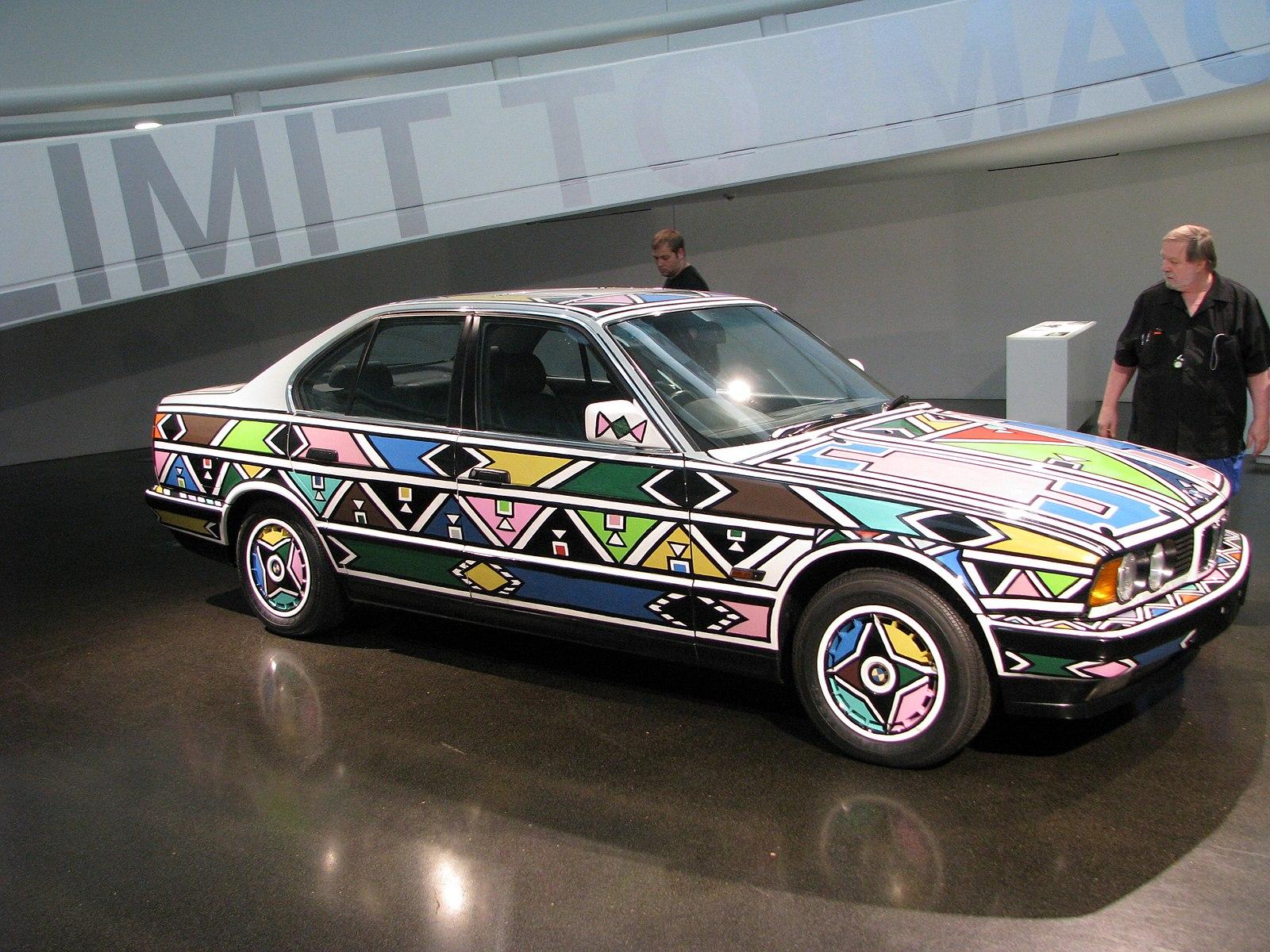
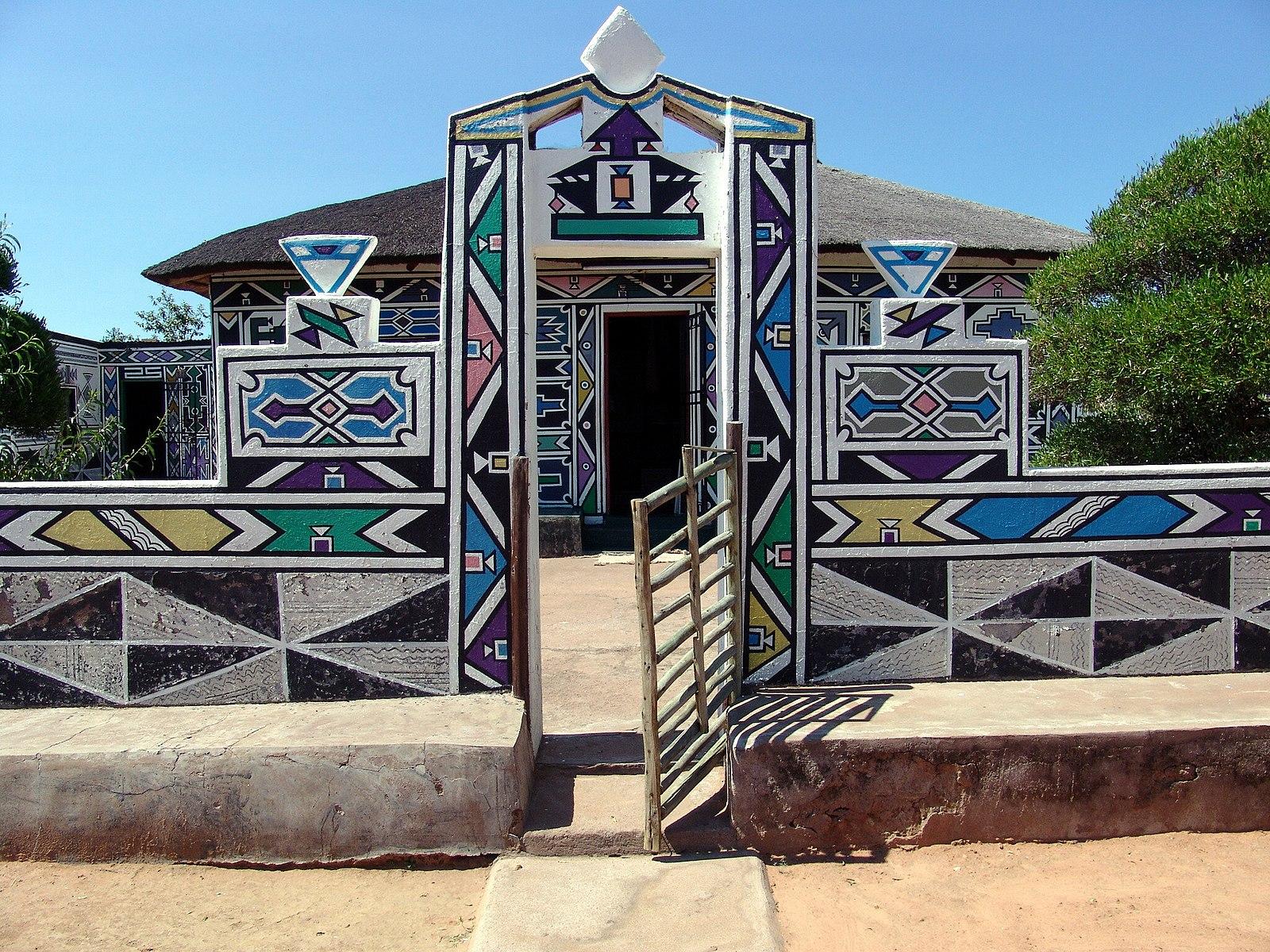
Source: https://human.libretexts.org/Courses/Solano_Community_College/ART_002%3A_Art_History/15%3A_The_New_Millennium_(2000_-_2020)/15.02%3A_Installation_and_Sculpture
0 Response to "Christo Is Best Known for Creating Art Work in Which He Wraps"
Post a Comment